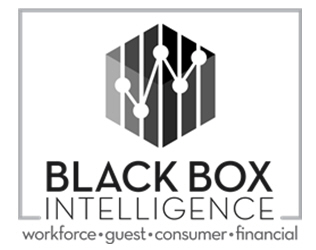 
Back To News/PR Index | 
| 
| Sales growth was 6.0% during October, a small decline from the 6.3% reported for September. Compared to July, it was a much bigger drop from the peak of 8.2% reached during that month. Guest counts have not recovered to their pre-pandemic level and are softening. Traffic growth was the worst for industry since March, at -6.4% in October. Meanwhile, restaurants are still challenged by staffing constraints which are complicating restaurant execution. The latest data from Black Box Workforce Intelligence™ suggests the industry may be taking some steps back when it comes to staffing levels in recent months. Given the staffing limitations, it is no surprise to see more negative online reviews about restaurant ‘service’. The percentage of these ‘service’ comments classified as positive decreased by 1.1% year over year during October. The average for the last 3 months fell by a similar 1.0%. In fact, October had the smallest percentage of positive ‘service’ mentions since the beginning of the year. The peak was reached in February, when sales were still down and there was less pressure on execution. Despite the increased operational difficulties, restaurants have been able to excel when it comes to ‘food’ sentiment. The percentage of food-based comments in reviews that were classified as positive improved marginally year over year in October (+0.4%), while the 3-month average remained essentially flat. Largest Area of Opportunity: Speed of Service ‘Service’ guest sentiment has been slipping since Q2, when more people started going back to restaurants. Specific areas like speed of ‘service’ being negatively affected is not surprising given the combination of higher guests counts and rising turnover levels. For limited-service, hourly, non-management turnover increased by over 20 percentage points year over year in Q3. For full-service restaurants, hourly turnover increased by about 15 percentage points during the same period. With turnover rates increasing steadily each quarter since the beginning of the year, there are still no signs of employee retention improving. Meanwhile, guests are noticing issues in the speed of ‘service’ they are receiving when visiting restaurants, with limited-service brands experiencing the biggest problems. Net sentiment specific to speed of ‘service’ was down 13% in Q3 year over year. Speed of ‘service’ sentiment was down by an even larger margin (16%) compared to immediately before the pandemic (Q1 2020). Speed is one of the main attributes of the limited-service experience and value proposition. Guests are sensitive to issues related to how quickly they can get their meals. Guest sentiment based on speed of ‘service’ has also dropped for full-service restaurants, albeit not as much as limited-service. Net sentiment for this attribute fell by only 3% year over year in Q3. Net sentiment for speed of ‘service’ was flat compared with Q1 of 2020. Furthermore, its value pre-COVID (Q1 2020) was 3.5 times smaller than speed of ‘service’ net sentiment among limited-service brands. This suggests speed is not as strong a driver in full-service or perhaps the fact that speed was already a problem for these brands preceding the challenges brought by COVID. **Net sentiment: a value representing the percentage of positive mentions minus the percentage of negative mentions for a specific attribute of the restaurant experience. Regional & Market Performance Out of the 25 biggest markets in the country, the one with the most positive guest sentiment based on restaurant ‘beverages’, ‘ambiance’ and ‘intent to return’ was Orlando. This DMA consistently has positive net sentiment. New York is leading the country in strongest net sentiment for restaurant ‘food’ and ‘service’. Part of the reason this may be happening is restaurants there may not be under the same pressure as those in other parts of the country. Out of these 25 largest markets, New York ranked the 3rd worst in October based on traffic growth, with guest counts still dropping in double-digit rates compared to where they were in 2019. The story is quite different for San Francisco, which seems to be challenged on many fronts. Despite being the major metropolitan area with the worst traffic growth results during October, restaurants there are having a hard time providing their guests with a solid restaurant experience. San Francisco had the lowest net sentiment based on restaurant ‘food’, ‘service’ and ‘value’ during the month. Financial metrics are “same-store” metrics & reported on a 2-year comparison unless otherwise noted The Restaurant Guest Satisfaction Snapshot™ (RGSS) is produced by data from Black Box Guest Intelligence™. Guest Intelligence is tracking over 190 brands to benchmark customer satisfaction and is the only online tool that integrates with operational performance data to validate the impact on financial performance. The data set focuses on six key attributes of the restaurant industry experience: food, service, ambiance, beverage, value and intent to return. The RGSS algorithm determines the highest-ranking brands based on sentiment. Brands included in this monthly snapshot must have a total of at least 250 mentions for the month. Restaurants must have a minimum number of units to be eligible as well. DMA rankings consider only the largest 25 areas. Media
Contact:
|
